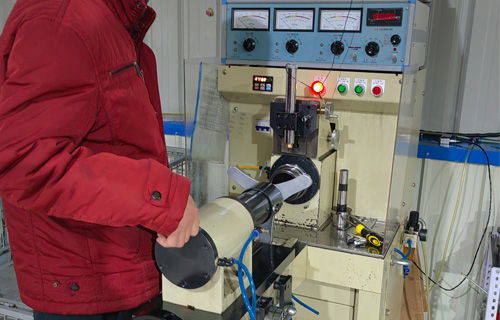
Nov . 21, 2024 13:49 Back to list
taper roller bearing clearance
Understanding Taper Roller Bearing Clearance
Taper roller bearings are critical components in many industrial applications, particularly in machinery and automotive sectors. They are designed to accommodate heavy radial and axial loads and are crucial for ensuring the smooth operation of rotating machinery. One of the key factors that directly influence the performance, durability, and efficiency of taper roller bearings is their clearance.
What is Bearing Clearance?
Bearing clearance refers to the intentional space between the rolling elements and the raceways of the bearing. This space allows for smooth movement and compensates for any thermal expansion or misalignment that may occur during operation. In taper roller bearings, clearance is essential because it affects how the load is distributed among the rollers, influencing the contact area and, thus, the bearing's lifespan and functionality.
Types of Bearing Clearance
There are generally two classifications of bearing clearance
1. Radial Clearance This is the amount of space between the rolling element and the inner or outer race when the bearing is unloaded. It is crucial for maintaining proper lubrication and minimizing heat generation during operation.
2. Axial Clearance This refers to the axial movement allowed within the bearing. In taper roller bearings, some axial clearance is necessary to accommodate thermal expansion while maintaining proper load distribution.
Importance of Proper Clearance
Proper clearance in taper roller bearings is vital for several reasons
1. Load Distribution Adequate clearance ensures that the load is evenly distributed across the rolling elements. Improper clearance can result in uneven loading, which can lead to premature wear and failure.
taper roller bearing clearance

2. Thermal Expansion Bearings can heat up during operation, leading to expansion of the components. Proper clearance allows for this expansion without compromising the bearing's integrity.
3. Lubrication Sufficient clearance facilitates proper lubrication, which is essential for reducing friction and preventing overheating. Insufficient clearance can lead to oil starvation and increased wear.
4. Vibration and Noise A bearing with incorrect clearance may produce excessive vibration and noise, which can affect the overall noise levels in machinery and potentially lead to operational issues.
Determining the Right Clearance
Choosing the proper clearance for taper roller bearings depends on several factors, including
1. Operating Conditions The temperature, load, and speed of the application will influence the necessary clearance. Higher temperatures may require increased clearance.
2. Bearing Design Different designs may have specific clearance requirements, so it is essential to refer to manufacturer guidelines.
3. Installation Practices Proper installation techniques also play a role in achieving the desired clearance. Misalignment or incorrect mounting can alter the intended clearance.
Conclusion
Taper roller bearing clearance is a critical aspect of the bearing’s design and functionality. It influences load distribution, operational efficiency, and the overall lifespan of the bearing. Therefore, understanding the concepts of radial and axial clearance, as well as the factors affecting them, is essential for engineers, maintenance technicians, and anyone involved in the design or maintenance of machinery. Proper assessment and adjustment of bearing clearance can save costs, prevent unplanned downtime, and ensure smooth and efficient operation in various industrial applications. By prioritizing the correct bearing clearance, organizations can enhance the performance and reliability of their machinery, ultimately leading to increased productivity and profitability.
Latest news
-
Premium Deep Groove Ball Bearings | High Speed & Reliability
NewsAug.29,2025
-
Durable Scaffolding Clamps - Secure & Reliable Tube Connectors
NewsAug.28,2025
-
Common Failures in Thrust Ball Bearings and Solutions
NewsAug.22,2025
-
How Tapered Roller Bearings Can Take Shock Loads
NewsAug.22,2025
-
Angular Bearings in High-Precision Spindles
NewsAug.22,2025
-
The Impact of Misalignment on Cylindrical Roller Bearing Performance
NewsAug.22,2025
